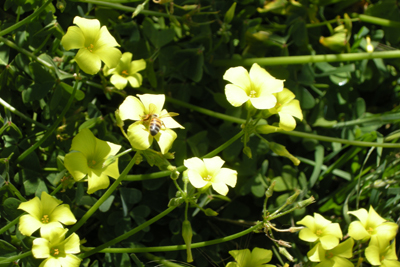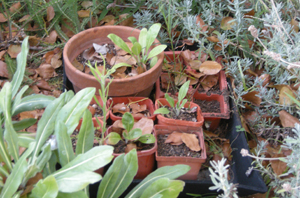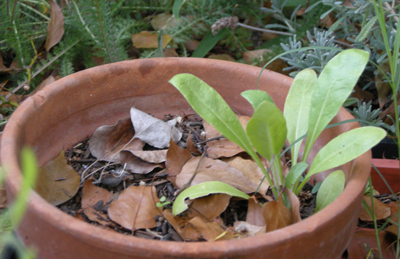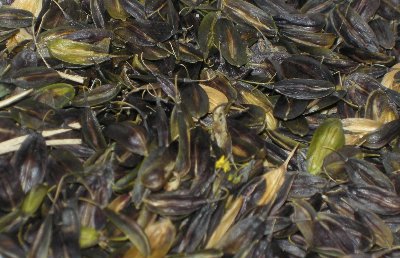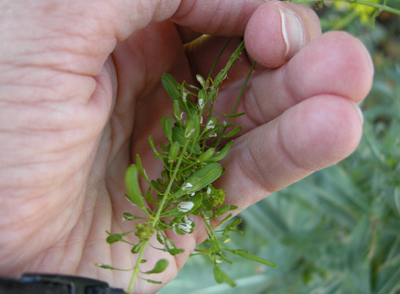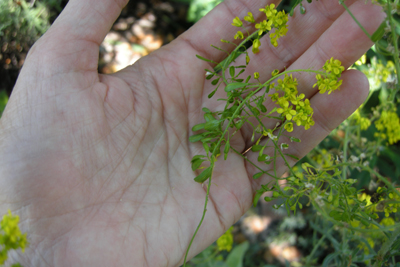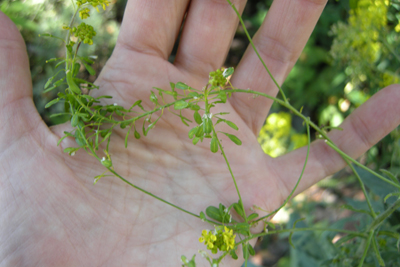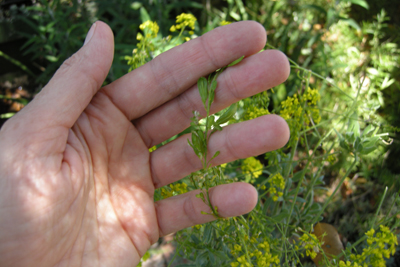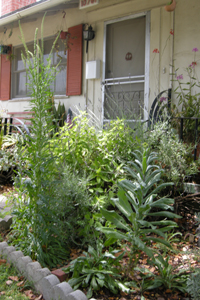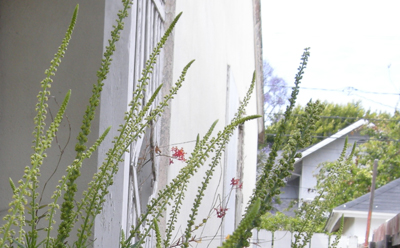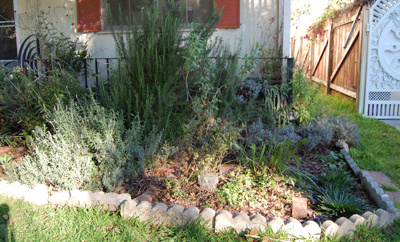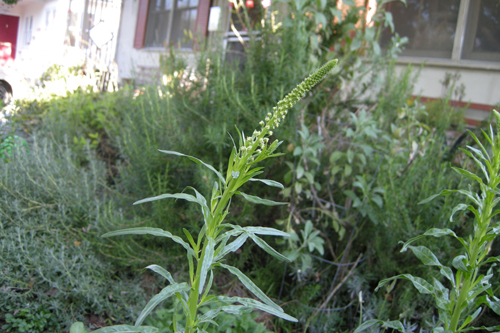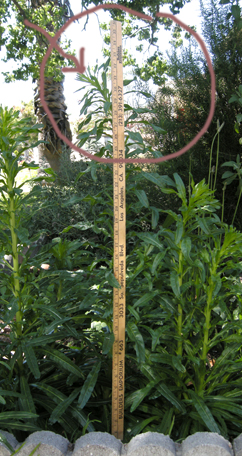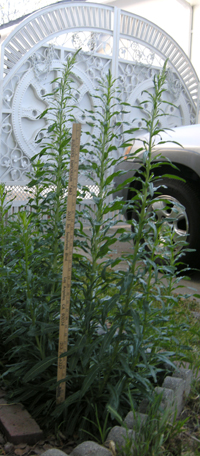I haven’t written for quite awhile. I seem to be wandering into various non-dye projects. As far as the dye plants go there is the ongoing collecting and drying my favorite invasive weed/dye-plant/Bee-snack – ie. Oxalis.
The woad and weld in the ground is surviving what passes for winter out here but the woad in-planter (on the porch) was nibbled down to the roots and what wasn’t eaten rolled over and died.
[woad from last year]
[new weld plants]
It’s probably not fair to blame the woad snacking on the Possums. We have a surprising variety of wild life that have adapted to city living: Racoons, Owls and Coyotes along with the Possums. Most of these aren’t seen too often unless you work really early or night shifts.
